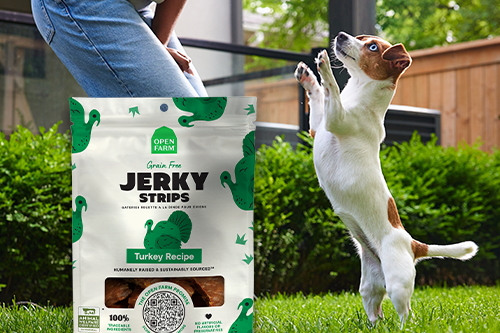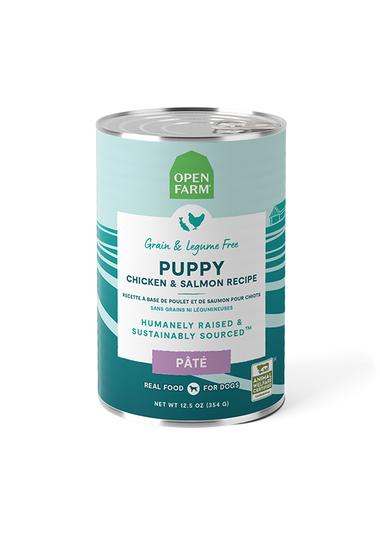Puppy teething is a natural part of a dog’s development but it can be a tough phase for your pup and you. As your pup’s adult teeth start coming in, you might notice them chewing on furniture and nipping at fingers. You might also hear them wincing in pain.
We’re going to help you understand what puppy teething is and what helps puppies during this stage. You’ll also learn how you can safely manage your puppy’s chewing habits.
What Is Puppy Teething?
Puppy teething occurs when their baby teeth fall out. This makes room for a dog’s adult teeth. The process typically begins around 3 weeks of age and lasts until they are roughly 6 months old. You may notice the following during this period:
- Chewing excessively to relieve discomfort.
- Swollen or tender gums.
- Increased nipping or biting behaviour.
Understanding the stages of teething can help you prepare and support your puppy through this phase.
What Helps Puppy Teething?
Teething ain’t easy! But there are plenty of ways to ease your puppy’s pain and protect your belongings:
- Provide Appropriate Chew Toys
- Give toys specifically designed for teething puppies. These are often made from soft, durable materials that soothe gums without damaging teeth.
- Rubber toys or silicone chew rings can be stuffed with treats to make chewing more engaging.
- Use Frozen Treats
- Freeze carrots, apples, or wet puppy food for a cooling and soothing snack while also being a tasty distraction.
- Frozen washcloths (dampened and twisted) are another safe, soothing option.
- Offer Edible Chews
- Look for teething-specific edible chews that are safe for puppies. These can satisfy their urge to chew and provide relief.
-
Always supervise your puppy with any edible chew to prevent choking or swallowing large pieces.
- Distract With Play
- Redirect nipping and chewing behaviours to toys or games that keep their mouth occupied. Tug-of-war or fetch can be great alternatives to chewing on furniture.
What to Do for Teething Puppies
You’ll need to manage your puppy’s discomfort while preventing destructive behaviour during the teething phase. Here are some tips to make the transition easier.
- Puppy-Proof Your Home
- Remove or secure items your puppy might be tempted to chew on: shoes, cables, furniture legs, etc.
- Use baby gates to restrict access to areas with valuable or unsafe items.
- Set Up a Chewing Zone
- Create a designated space with a variety of safe chewing options. Rotate toys regularly to keep your pup from getting bored.
- Establish Boundaries
- Use positive reinforcement to teach your puppy what’s appropriate to chew on. Give the puppy praise when they choose a chew toy over your ottoman.
-
Avoid punishing the your puppy for chewing on the wrong items. Instead, redirect them
- Maintain a Consistent Routine
- Your puppy thrives on consistency. Schedule regular playtime and training sessions to keep its energy directed toward positive behaviours.
What Is Good for a Teething Puppy?
Finding the right solutions for your teething puppy can make all the difference. Here’s a list of tips that work like magic.
- Safe Chew Toys
- Look for toys with a puppy-safe label. These are usually made from materials like soft rubber or nylon.
- Avoid toys that are too hard. They can do a number on your pup’s budding teeth.
- Always watch your puppy closely when you give it any teething or chewing products. Inspect chew toys regularly for signs of wear-and-tear. Replace them as needed.
- Encourage Healthy Chewing Habits
- Reinforce positive behaviour by rewarding your puppy when they chew on appropriate items.
- Avoid giving old shoes or household items as chew toys. Failure to do so can give your pup mixed signals about what’s acceptable and what’s not.
- Frozen Options
- Freeze puppy-safe peanut butter in a toy for a long-lasting treat.
- Frozen plain yogurt can also be a great, soothing option.
- Teething Gels
- Your local neighbourhood pet retailers might carry puppy-safe teething gels that you can apply to puppy’s gums for relief.
- Healthy Snacks
- Chilled fruits like watermelon or cucumber slices (without seeds) can be both hydrating and soothing for your puppy.
- Monitor Their Progress
- Keep an eye on your puppy’s teeth as they grow. Retained baby teeth or misaligned adult teeth may require professional attention.
- Visit the Vet
- Pay a visit to your vet if their gums seem more swollen than normal or if they show signs of pain. Your vet can check for issues like retained baby teeth or infections.
Final Thoughts
As tough it is, remember that puppy teething is only temporary. Still it’s an important part of puppy development and you can ease your dog’s discomfort along the way by providing appropriate chew toys, frozen treats, and healthy distractions while also protecting your belongings.
Consistency, supervision, and patience are key to guiding your puppy through this stage successfully. Adopt the the right approach and you’ll help your puppy grow into a happy, healthy, and well-behaved adult dog.
This article is meant only as an example of what might work well for your pet, please reach out to our Pet Parent Experience Team if you have any questions about your pet’s own unique circumstances! To ensure these products are a good fit for your furry friend, we also recommend consulting your vet about any new diet, or environment changes, especially if there is a medical concern. They should be able to help as you and your vet know your pet’s medical history best!








































 Sign In
Sign In
 Create Account
Create Account











